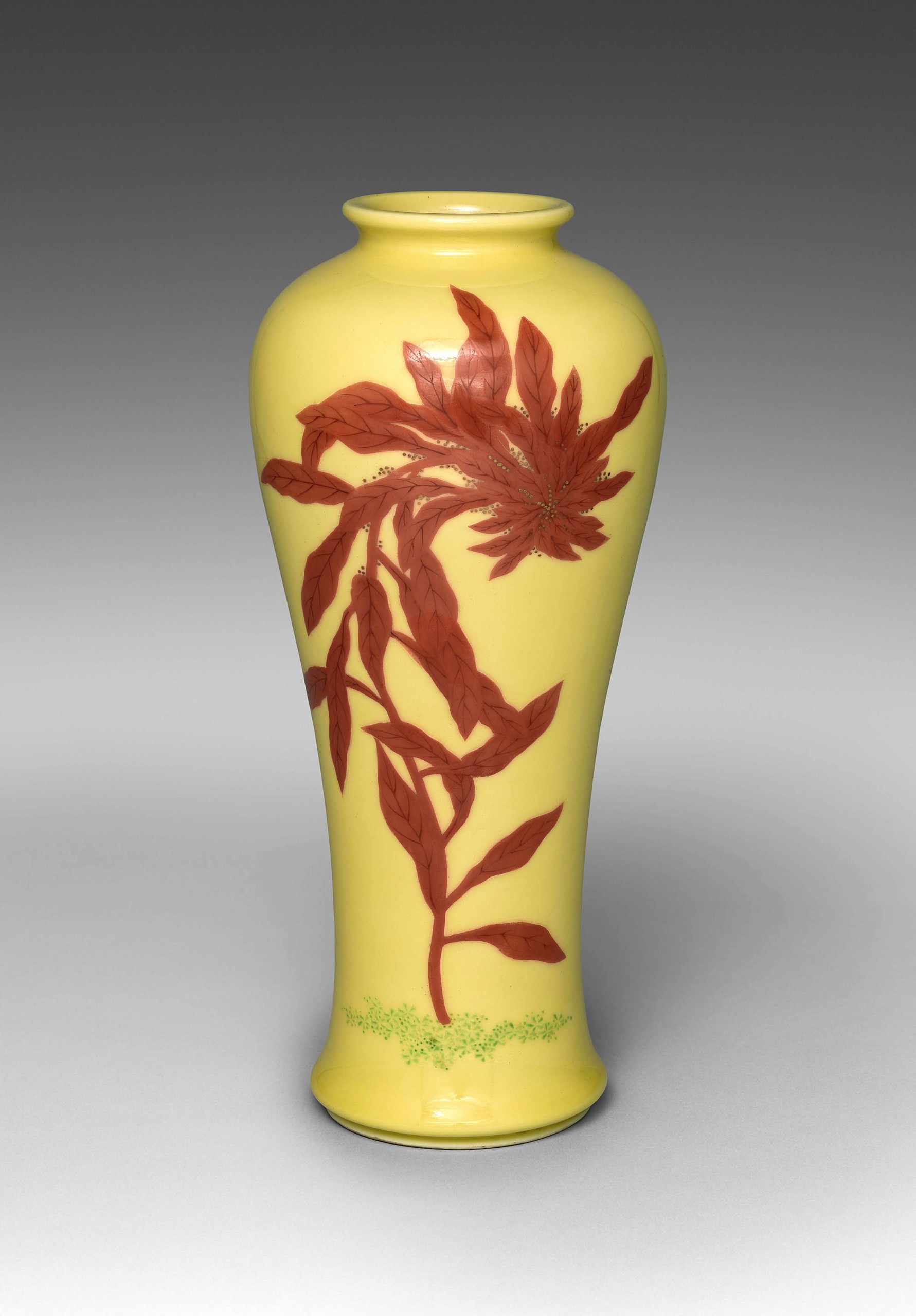
Prunus vase with amaranth by Seifu Yohei IV (Japanese, 1872-1951), 1914-46, porcelain with yellow glaze and overglaze color enamel and gold. The Cleveland Museum of Art, Gift of James and Christine Heusinger 2022.
By Karla K. Albertson
CLEVELAND, OHIO — On a basic level, ceramics such as vases and teacups are mere containers. But, at times, the containers surpass the contents to stand alone as works of art. Such is the case with the late Nineteenth to Twentieth Century products of a Kyoto studio led by a series of master ceramists who took the name “Seifu Yohei.”
“Colors of Kyoto: The Seifu Yohei Ceramic Studio” will be on display at the Cleveland Museum of Art through March 10. As invaluable as the accompanying catalog is, the great gift is the opportunity to approach these pieces of porcelain and stoneware in person. Blown apart are any previous conceptions of “Japanese ceramics,” for the exhibits are incredibly diverse. Definitely not a studio churning out routine productions.
Of the hundred examples in the catalog, the largest group is by the third master to head the studio, and a passage from the exhibition website describes his influences:
“Seifu Yohei III (1851-1914) was a leading ceramist of Japan’s Meiji period (1868-1912). This Kyoto-based artist had a focus on producing subtle color and surface design effects in porcelain. He had a deep interest in Chinese-style tea, known as sencha in Japan, and literati culture — that of bibliophiles with a penchant for artistry and intellectual exchange. Seifu, pronounced ‘say-foo,’ is written with two ideographs that together mean ‘pure wind.’ The name was likely bestowed upon the first Seifu — Seifu Yohei I (1801-1861) by his mentor, Nin’ami Dohachi (1783-1855), an artist renowned for his ceramics made for sencha. It derives from a poem by Lu Tong (died 835) that describes the relationship of a freethinker to imbibing tea. Figures pursuing the untrammeled life suggested in this ancient poem appear in underglaze blue landscapes painted on tea sets by Yohei I and later generations of the Seifu studio.”
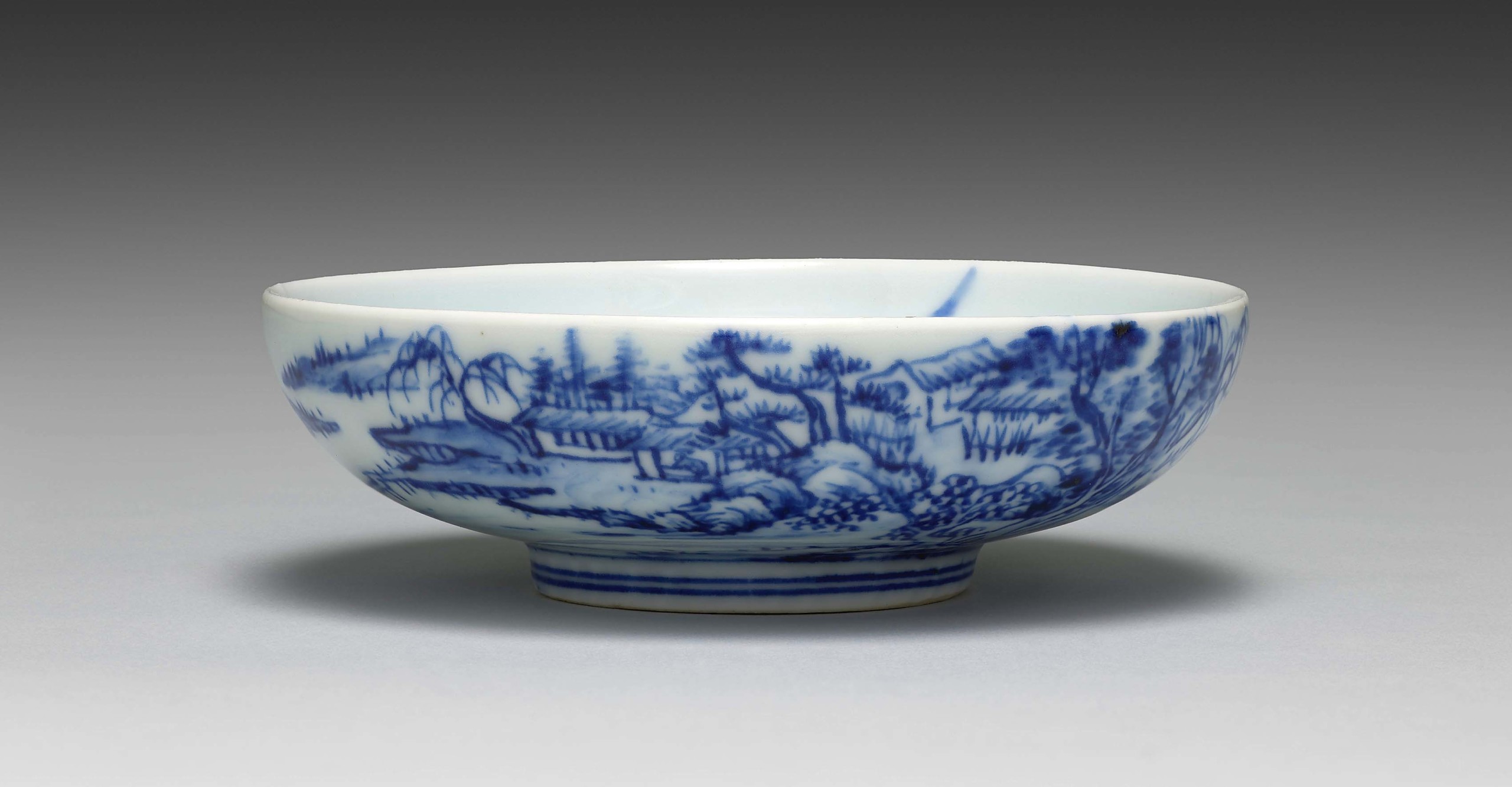
Sweets dish with landscape by Seifu Yohei II (Japanese, 1844-1878), 1874, porcelain with underglaze blue. The Cleveland Museum of Art, Gift of James and Christine Heusinger 2022.
Literature, art, tea and beautiful porcelain to sip it from — what could be more relaxing to the soul. Especially if the ceramics were the brilliant works of a master artist.
How did all this rich trove of examples come together in Cleveland? The collecting hearts among us want to form representative, significant assemblages — perhaps even museum worthy. This show celebrates the 2022 gift of Kyoto ceramics by James and Christine Heusinger. The catalog introduction notes: “A particular goal for Jim and Chris was to assemble a collection that illustrates the great diversity of Yohei III’s glazes and sophisticated design processes: the works need to remain together to truly understand the scope of his accomplishments.”
Two scholars in the field organized the exhibition and contributed the major essays to the catalog. Shinya Maezaki, professor at Kyoto Women’s University, wrote on “Establishing Ceramics of Imperial Japan: The Life and Art of Seifu Yohei III.” Sinead Vilbar, the Janice Hammond and Edward Hemmelgarn curator of Japanese Art at the Cleveland Museum, explored “Porcelain in Kyoto” and produced the in-depth entries on the objects.
Speaking with Antiques and The Arts Weekly, Vilbar talked about how the show came together: “I’ve been getting to know the collection over the decade I’ve been with the museum and to understand how it represents the studio. I felt the exhibition would be a way to introduce everyone to the studio as a whole and to show all the different dimensions. Since 2017, I’ve been thinking about displaying the collection and having it be a celebration of a gift.”
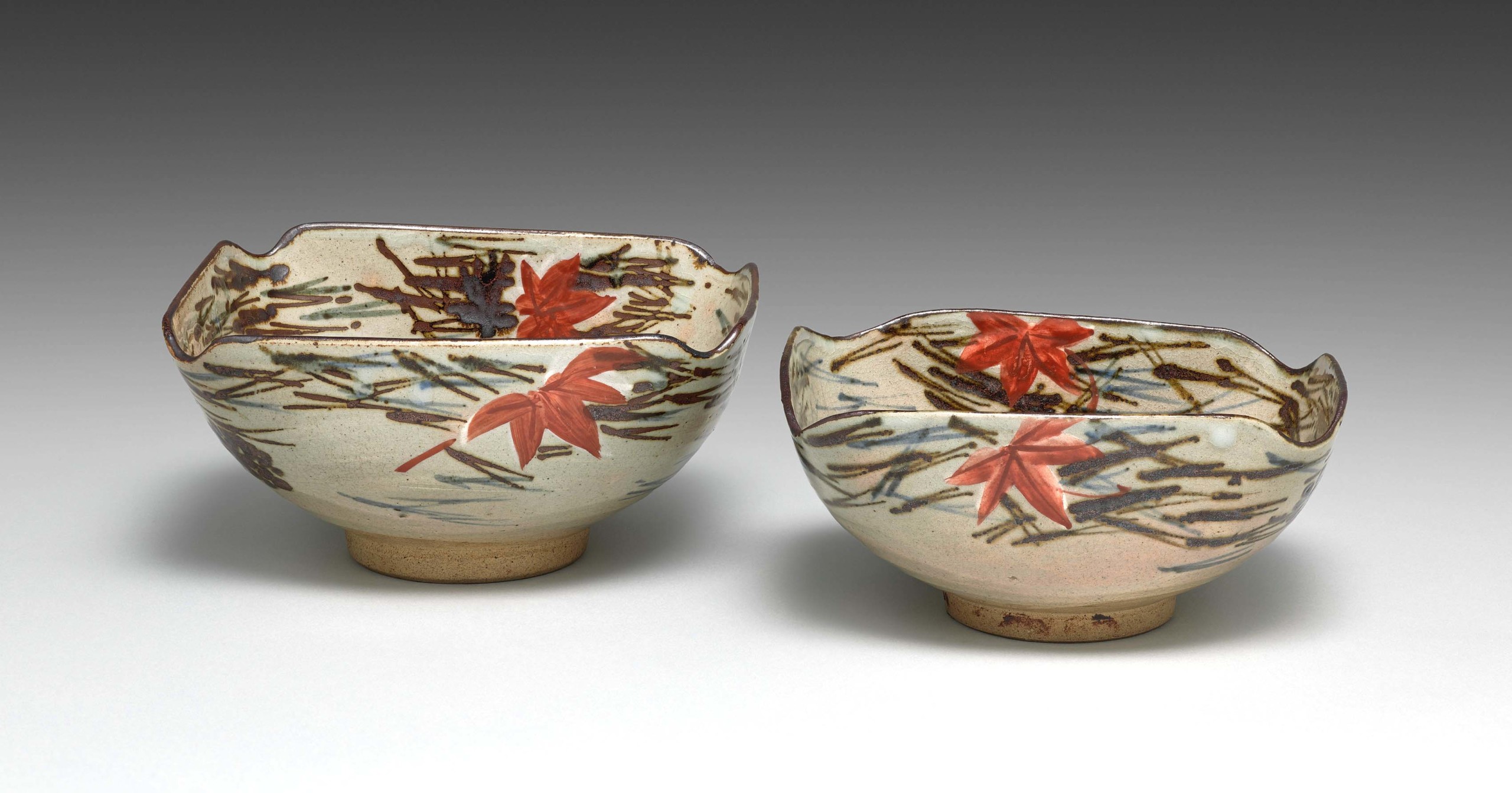
Nesting dishes with scattered pine needles and maple leaves by Seifu Yohei I (Japanese, 1801-1861), circa 1844-57, pair of dishes; stoneware with underglaze blue, iron oxide, slip and crackled glaze, and overglaze color enamel. The Cleveland Museum of Art, Gift of James and Christine Heusinger 2022.
The curator went on to explain why the work of the principal artist had not previously been better known. Seifu Yohei III was the first ceramist to receive the title “Imperial Household Artist.” When another potter, Miyagawa Kozon I, became the second to receive the designation, he expanded into a factory in Yokohama and did pieces for export: “Seifu Yohei III was more concerned with quality of production and experimenting with new glazes and trying to create the best that he could in any given piece that was meant for exhibition. So there are not that many places that have his work, and he is far less known.”
Even when the late Nineteenth Century fashion for “Japonisme” was at its height — women in the West wore kimonos, added painted screens to the parlor, and bought tickets for the The Mikado — this porcelain was not in the picture. The studio only made one appearance abroad: a pair of vases by Yohei II were exhibited at the 1876 Centennial Exposition in Philadelphia. The “White Porcelain Vases with Molded Design of Plum Blossoms” are now in London’s Victoria and Albert Museum.
Vilbar adds: “Seifu Yohei III was not interested in creating for the export market; he was absolutely open to people coming to Japan to acquire from him. He wasn’t aiming to expand his market through export.” His principal goal was to equal the quality of Chinese ceramics which then were considered the best in the world: “He wanted to replicate the glazes, to match those ceramics technically.”
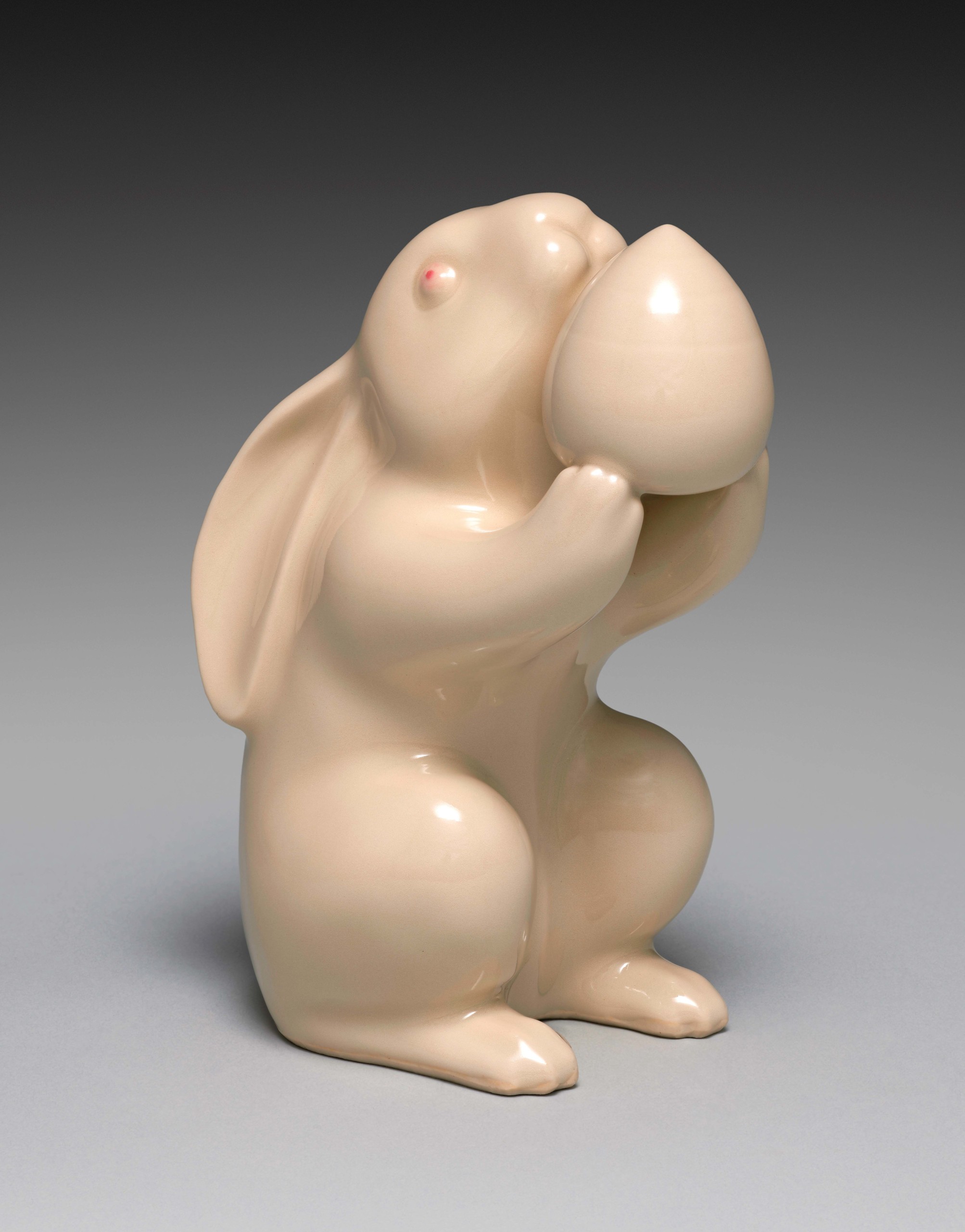
Rabbit with jewel by Shinkai Kanzan (Japanese, 1912-2011), 1930s-80s, porcelain with underglaze pink and cream glaze. The Cleveland Museum of Art, Gift of James and Christine Heusinger, 2022.
If mention of China instantly brings to mind blue and white designs, this is a “wait, there’s more” moment. Yes, those exist but the glory of the 1900-14 period when this artist worked are the molded pieces with subtle glazes such as a vase with peonies and butterflies in relief, covered in blush pink glaze. Another vase with a molded and carved white phoenix cleverly brings in blue to paint the branch on which he perches.
Most surprising are occasional pieces from early periods, scattered among the familiar, that seem like exciting examples of mid-Twentieth Century studio pottery from the West. Such is a covered stoneware bowl with geometric designs made by Seifu Yohei II, 1861-78. Even a hefty selection of illustrations cannot touch the scope.
When asked what she hoped the exhibition’s impact would be on visitors, Vilbar said: “We have the two entrances to the exhibition, one of which focusses one’s attention on the different colors of the glazes the studio produced. Then the other entrance focusses on sencha or the Chinese style of tea drinking. My hope is that whichever entrance one chooses, they would hit immediately one of the touchpoints of what was special and interesting about this studio.”
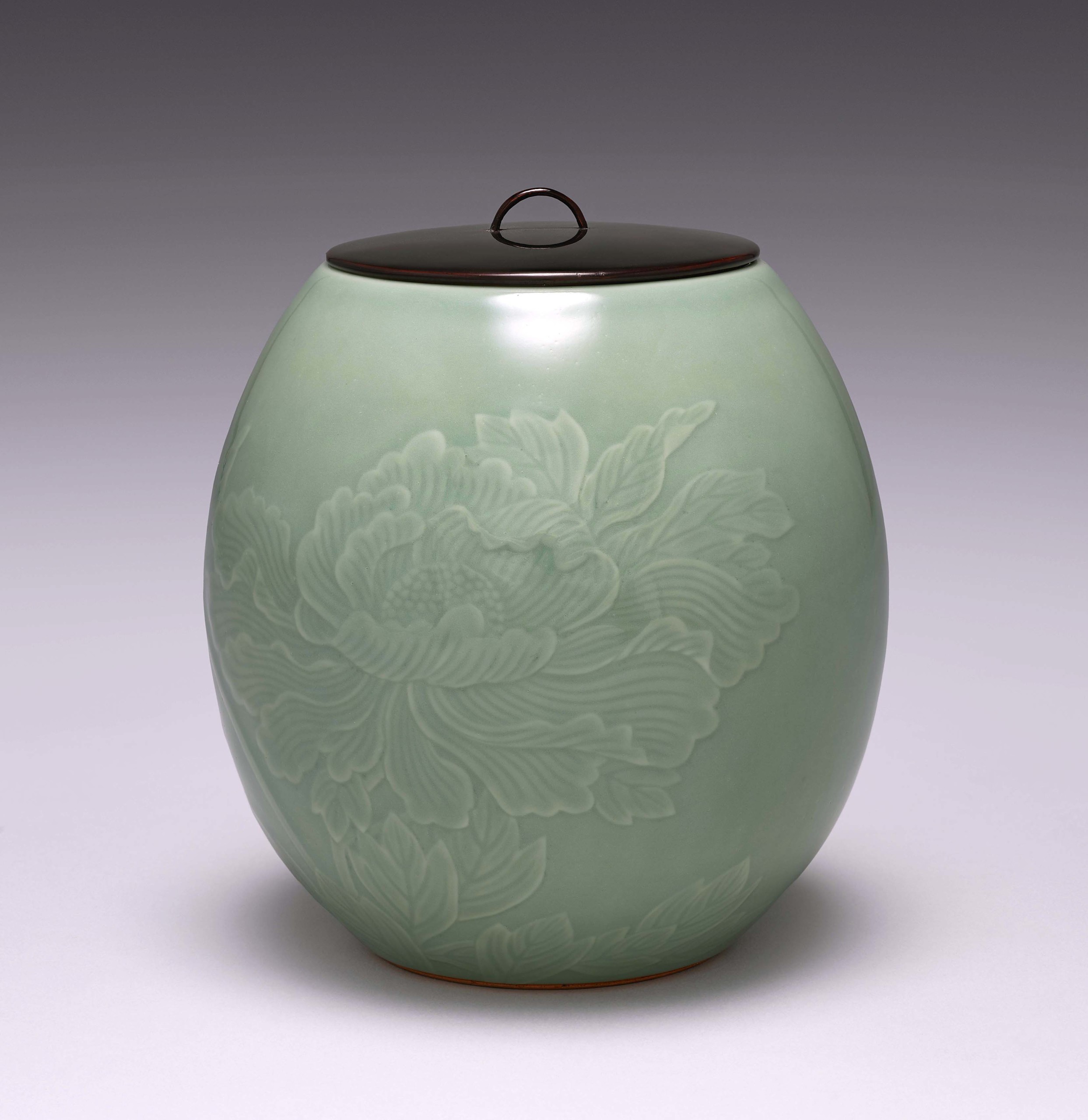
Water container with peonies by Seifu Yohei III (Japanese, 1851-1914), 1900-14, porcelain with molded and carved design, green glaze and lacquered lid. The Cleveland Museum of Art, Gift of James and Christine Heusinger, 2022.
“And then when you go in, you encounter the aspect of the lineage of the studio and the four generations. I hope they would come away with — first and foremost — how important sequential generations are to the quality of craft production in the sphere of Japanese art. And also, I hope they come away with a sense of how important China was as a source of inspiration for people producing works of art in Japan at that time.”
A first step toward relaxing into the exhibition’s atmosphere is a trip to the exhibition site at www.clevelandart.org which offers several articles and catalog ordering information. Then perhaps make that cup of tea.
The Cleveland Museum of Art is at 11150 East Boulevard. For information, 216-421-7350.



















